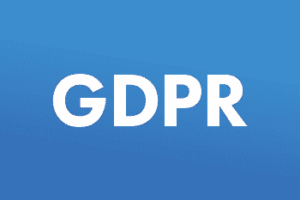It took months of hard work and collaboration with your developer, but your B2C app is finally finished! But there’s a problem. You assumed users would be eager to download your new mobile app as soon as you shared the announcement via your email newsletter and social media. You’ve only had a few dozen downloads, though. A far cry from the thousands you expected. So what gives?
It’s particularly perplexing because you went to one of the nation’s best emerging tech hubs, Dallas, Texas, and you picked a highly-ranked developer for the project. You even performed comprehensive beta testing in Austin, Dallas, Houston and a few other cities where your company has a major presence. Now, you’ve put the app out there for the world to enjoy, but it just hasn’t found its wings. Now you’re wondering: how do you identify and connect with the right users?
How Well Do You Know Your Users?
The most important step for connecting with your target audience involves identifying and understanding the people who will be using your app. Step into your user’s shoes. What pain point or problem are people trying to solve when they seek out your mobile app? Are they looking for an easier way to shop and track their store loyalty points? Are you targeting busy businesspeople who need your time management and scheduling tool to stay on track?
Take time to understand who would use your app and why, and be realistic. Don’t waste your time trying to target a demographic that’s unlikely to use your app. Also, don’t try to cater to every conceivable prospective user. When people download an app, they do so for a specific reason, whether it’s to solve a problem or fulfill a need. You need to understand their motivation before you can start connecting with your target audience. This is one area where mobile app analytics are useful, as these tools give you insight into how your users are interfacing with your application, which features are the most popular and areas where you can improve UI and UX.
Getting into the App Stores
Many companies offer downloads of their B2C app on their website, assuming this will bring results. And while users do certainly download apps from company websites, the Apple App Store and the Google Play Store account for a vast percentage of app installs. In fact, from July 2008 through September 2016, the Apple App Store saw a whopping 140 billion app downloads.
The bottom line is that you’ll want to work with a mobile app developer who’s well-versed in the app store requirements. Meeting the guidelines needed to get your app approved and listed for download will improve your app’s overall visibility, making it more likely you’ll get the attention of your ideal user. In fact, an Apptentive study found that 63 percent of users reported browsing stores to discover new apps. You want to connect both with people who are simply browsing and those searching for a specific type of app.
Once your app is uploaded into the stores, make sure to optimize your description to include key phrases your users would enter when trying to find your mobile app. Otherwise, you could be invisible to the very people you want to target! Finding the right keywords is fairly simple, using a tool like Google’s Keyword Planner Tool or one of the many other keyword research tools. These resources let you enter a phrase or subject, then they provide data on the number of people who search for that phrase on a monthly basis. You’ll also get suggestions on similar (and potentially more popular) phrases you can leverage.
Marketing Your App in a Meaningful Way
Once you identify your mobile app’s target audience, consider what marketing strategies would be most effective for connecting with that demographic. For example, if you’re targeting a younger, trendier demographic, you might invest in social media marketing and display advertising on websites frequented by these prospective users. If your app is designed for Baby Boomers and seniors, it could be worthwhile to advertise or partner with websites, publications and service providers that cater to this older population. Think of how your ideal user interacts with technology, then work to make your app visible on these avenues.
Also, consider strategies for connecting with your mobile app’s target audience in the course of your business dealings. Your app should be promoted heavily in your stores, your website and anywhere else your customers or clients visit, such as:
- Company social media profiles;
- The company website;
- Your email newsletter and email blasts;
- Mailed items and printed materials;
- At store locations, branches or offices;
- On the message that plays while callers are on hold; or
- In other mobile apps you’ve released (assuming there’s a degree of overlap in the user base).
With a strategic approach, you’ll be successful in making your app more visible amongst the people who comprise your target audience. It’s simply a matter of knowing who’s using your app and why. Once you have this insight, you’ll be better equipped to position your app in a noticeable, appealing way—whether it’s on a bus or subway advertising panel, in your social media posts or in the app stores.
At 7T, our team of Dallas mobile app developers has the expert knowledge required to build a user-friendly app that will engage your target audience. And we can achieve that goal in a timeframe and at a price up to 40 percent less than what you would see elsewhere. It’s all thanks to our agile, open source development platform called STAX, which features front-end and back-end elements for a faster, smoother build. Our team works with clients throughout Texas, across the nation and beyond. Contact 7T today if you’re ready to start building an app that will take you closer to achieving your company’s objectives.









